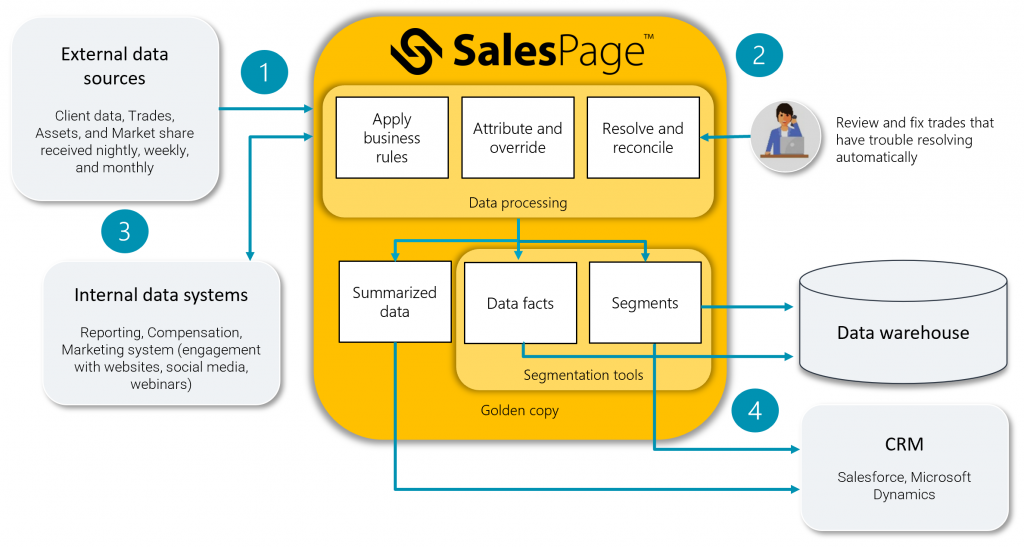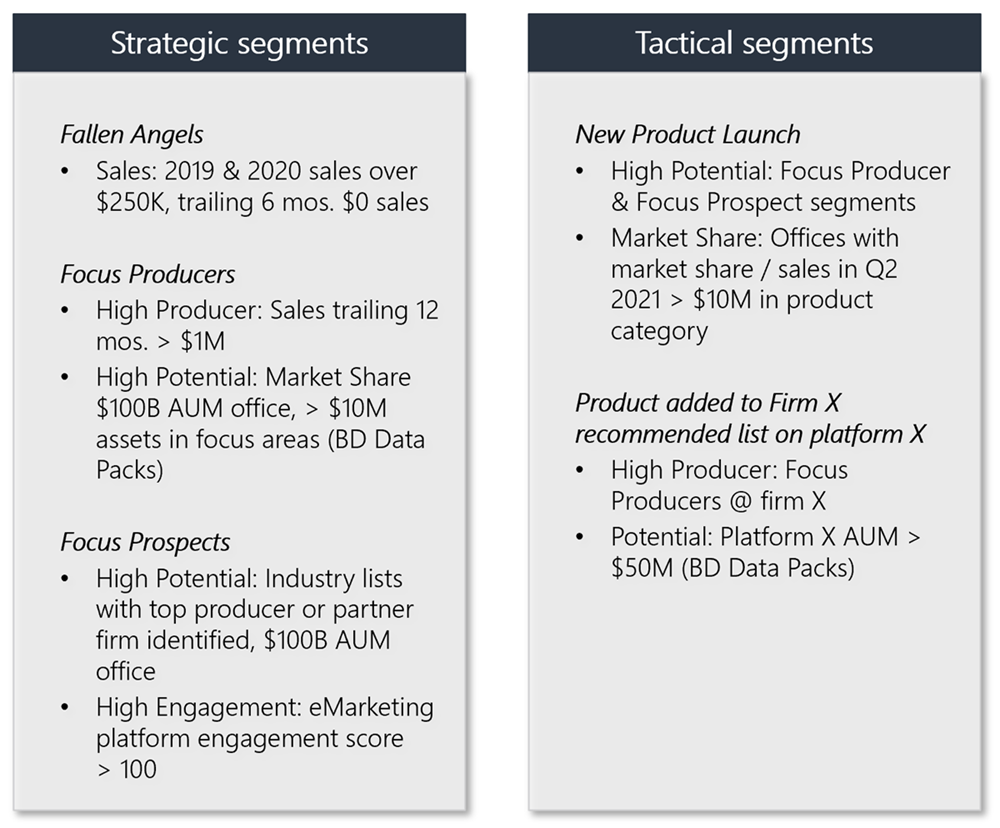Are you spending more time getting the data right than using it for segmentation? Is your BI team able to leverage a holistic set of current, accurate, and relevant data to help sales and marketing leadership define segments, incentivize, and execute targeted campaigns? Does your sales team have the top targets they should be focusing on for the week? If your data is siloed and your time and resources are limited your firm is at risk of inefficiencies and missed opportunities.
With the right data in one place (aggregated and accessible) and the right tools, you can overcome silos to define, measure, and enhance your segmentation strategy over time to achieve your distribution and retention goals. Where to start? Let’s take a step-by-step look at how SalesPage helps you segment more effectively.
Gather criteria in one place
Think of your criteria and underlying data as building blocks. To organize and bring these blocks together, you need a mix of people, processes, and technology. SalesPage’s distribution data platform streamlines the process:

- Unifies all types of data, including first and third-party data
- Uses industry specific logic, technology, and workflow
- Allows data flexibility and scalability in the enterprise – whether it’s incorporating a new data source or system
- Applies segmentation rules (defined by you) to create and update segments and distributes data to the systems you need, so you can easily generate actionable insights
Define your segments
You have your blocks organized, but before you start building you need a plan. Segments can be based on a couple of data points or a variety of data. How you define your segments depends on your data (what and where it lives), processes and architecture (how it’s flowing), resources (existing tools, expertise, and time), and goals. You may have strategic (macro) segments that group audiences based on potential value along with tactical (micro) segments that use time-sensitive data (e.g., you have a new product launch where you want to target a subset of high potential advisors) to provide a short-term list of targets for a sales campaign.
SalesPage’s segmentation tools allow you to create a plan for your segments based on any distribution data element mastered in SalesPage and elsewhere:
- Sales and Assets
- Market share (e.g., Walletshare, Market Metrics)
- eMarketing platform data
- CRM activity data
- Broker dealer data packs
- Industry lists (e.g., Barrons)
- Demographic data
- Third-party data (e.g., Discovery Data, AdvisorAtlas)
Segment examples

Measure and enhance segments over time
You have your organized blocks and plan, now it’s time to start building (and remodeling)! Data changes – from advisors’ behaviors and needs to market fluctuations. A prospect could be in one segment today and another tomorrow. Being able to quickly and easily adjust segment definitions and members ensures your email, call, or targeted campaign reaches those that are truly applicable. Measuring segmentation effectiveness can be done by looking at sales for a given segment over time. If you’re not seeing lift, you can adjust to reach your goals.
SalesPage segmentation tools have version control, which allows you to set a current version and track history. Once a segment is active, it (and others) are refreshed daily as part of SalesPage’s nightly cycle where we bring in and process data from all your sources. This data and segments are shared with your internal systems (CRM and Marketing) making them immediately actionable.
- BI/Analytics can quickly and easily use a consolidated source of accurate data to build and update strategic and tactical segments
- Sales and Marketing Leadership can adjust segments, incentive, campaigns to achieve distribution and retention goals
- Sales has the top targets they should be focusing on
Your next step
If you’re looking to improve the effectiveness of your segmentation, contact us! We’d be happy to discuss what the best approach would be for your firm.